
Aliens: Fireteam Elite Review
Cold Iron Studios was founded in 2015 by a team of industry veterans, and Aliens: Fireteam Elite marks their first official release as a studio, and an ambitious one at that. To say that Aliens: Colonial Marines soured the industry's perspective of the Alien franchise is an understatement. Alien: Isolation helped redeem this to some degree, but when a co-op shooter based on Alien was announced, the general consensus online was that it would be a disappointment. Even friends who saw me playing Aliens: Fireteam Elite through Steam messaged me under the assumption that the game was bad.
Fireteam is able to sit comfortably amidst its sibling titles by managing to still carve its own path in the story. It doesn’t tell the tale of an all-out war with the Xenomorphs, nor does it tell a story of a single isolated incident against an indomitable foe. In Aliens: Fireteam Elite, the Xenomorphs already won. The Colonial Marines are now on damage control, trying to reach out to ravaged settlements in the hope of extracting just one survivor. And that's where you come in.
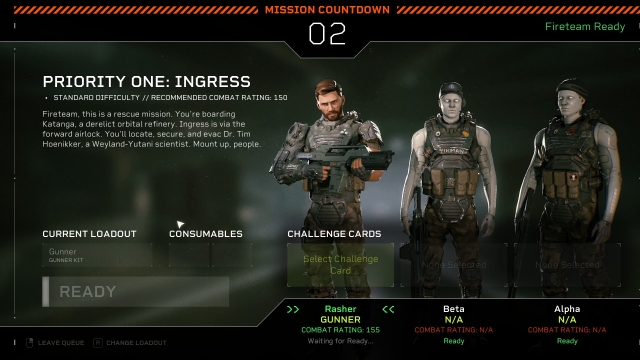
Players can choose from one of four classes: Gunner, Demolitions, Technician and Doc. You can also unlock a Recon class upon completing all campaigns. I took a great liking to the Technician class, who got access to a very powerful revolver and had abilities designed around area denial and defensive capabilities. All classes come with two activated abilities, a passive ability, and perks that can be unlocked and attached to them as they level up. The perk system in Aliens: Fireteam Elite is one of the most interesting methods of doing a perk system.
You have a small board to play with in a system akin to a Resident Evil inventory system. To take a perk, you need to place it into your board (and have the space to do so). Some perks can be universal, but a majority are tied to each class and are unlocked by leveling them up. Leveling up a class also unlocks more space on the perk board, allowing you extra room to play perk-Jenga with. It’s an innovative system that works surprisingly well and is a nice way to add progression to the game in a way that feels refreshing.
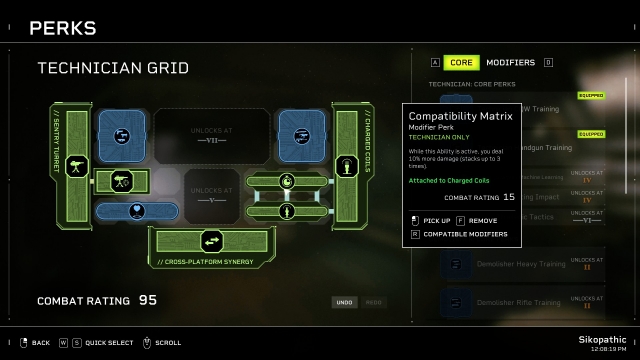
Outside of your class and perks, you can also customise your weapon loadout that you bring with you. You unlock more weapons as you level up your account, and you can find various attachments & consumables by playing through levels and finding hidden caches, or getting them as rewards upon completing the level. Consumables range from a temporary buff of incendiary ammo, to a sentry turret that shocks Xenomorphs that get too close. Consumables can be found in missions, and those that aren't used will be added to an inventory that you can access on the ship before leaving for future missions. Weapons have three attachment slots, usually related to the barrel, the magazine, and the sights, and each upgrade offers various bonuses to how they handle. There’s no grinding for powerful add-ons, but rather each add-on is a side-grade that grants varying buffs to match your playstyle. It’s a fun system to tinker with, and after only a few missions, you can use the store on your main ship to unlock any attachments you want to try out by spending requisition credits.
If buying marine cosmetics or gun add-ons isn’t your flavour, then maybe challenge cards will be. Challenge cards can be obtained with Rep Scrip (earned exclusively through leveling up or completing missions), and offer you cards that act as modifiers for the level, usually to your detriment. They can disable certain weapons, remove medkits or make you take significantly more damage. The plus side is that challenge cards come with the reward of a substantial experience modifier upon completing the level, but failing the level will make you lose the card, and probably a bit of your ego in the process. Good luck!
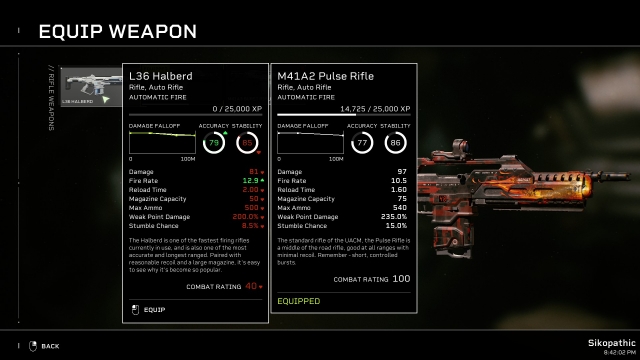
On launch, Fireteam gives you access to four campaigns, each spanning three levels with the promise of post-launch DLC teasing at more campaigns coming in the future. Campaigns generally are search-and-rescue based missions, in which you must locate (or otherwise guarantee the safety of) survivors among a Xenomorph-infested locale. Such locations range from an overran space station to an abandoned Weyland-Yutani research site, and there are minor procedural elements when playing that you may not notice until your third or fourth run through a level. Exit doors may switch places or room layouts may shift slightly between playthroughs, and it’s subtle enough that you will notice something is different, but maybe not what, which overall lends itself to the atmosphere and replayability that Fireteam is aiming for.
Even on the lower difficulties and earlier levels, Xeno’s come at you in the hundreds. They will burst through doors, ambush you at corners and even burst out of vents in packs. Colonial Marines had a similar feature with vents, but such locations were very easy to spot and made the attacks lose their charm. In Fireteam Elite, maps are littered with hundreds of vents, and it's totally random if and when a swarm of Xenomorphs will emerge from one. The first campaign will also make a habit of having some vents suddenly open up as if disturbed, only for nothing to happen. Despite being a co-op third-person shooter, Aliens: Fireteam Elite surprisingly is still able to get a good scare out of players through not just jumpscares, but simple paranoia.
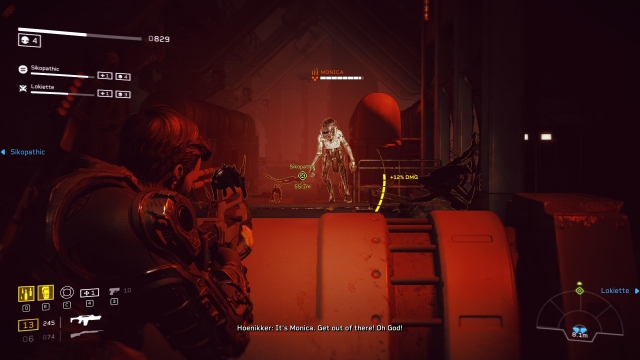
Attacking you from every angle isn’t the only way that the Xenomorphs are a formidable foe. Aliens: Fireteam Elite features a surprisingly intuitive AI for your opponents. Xenomorphs will scurry across walls and ceilings at random and attempt to dodge your shots and cut you off by climbing up walls if you try to escape to higher elevations. Not only this, but Fireteam features several unique aliens in a mechanic akin to Left 4 Dead’s special infected. Prowlers will hide to try and ambush you, sometimes even on the ceiling, before pinning you down. At higher difficulties, these can come in swarms of their own. They are usually supported by Bursters, who will charge towards you and, when destroyed, explode for massive damage. Warriors and Drones are your more tankier enemies — they can take a beating, and can dish it out just as hard. Drones will employ hit and run tactics during firefights, where they barge through waves of Xenomorphs, harass your team and then quickly escape. The most impressive, and a clear show of the Xenomorph AI is the Spitter. Spitters will sit a good distance away, usually targeting deployables such as turrets just out of their reach. When not spitting acid at you and your belongings, they will actively seek cover, only emerging to take a quick shot before sinking back down. Attempting to rush one down will result in it trying to back off as a reaction. The simple intelligence of the Spitter AI to actively try to preserve its own life while making yours a living hell means that just one arriving during a firefight can very quickly turn the tides against you. The Xenomorph AI is a huge favour for the game, forcing players to think tactically about how they approach situations and making the Xenomorphs feel like a real threat.
Later campaigns will pit the players against Synths that will fire at you and your team from afar as opposed to a Xenomorph charging towards you. I was initially worried when I came across this section, as the combat against humanoid targets in Colonial Marines was a major part of what turned myself and others off the game. Thankfully, Aliens: Fireteam Elite handles this aspect of the combat very well. Fireteam features a cover system that greatly compliments this style of gameplay, and much like Xenomorphs, the Synth AI is actually smart and it makes playing against them feel rewarding. It helps that the gunplay itself is very enjoyable, with an incredibly satisfying hitmarker and sound cue occurring whenever you land a kill.
Explosive barrels scattered through levels allow tactical control of choke points, and a cover/vaulting system allows easy traversal of spaces. Vaulting can be an issue when it isn’t always clear what can actually be vaulted, and several times I would go down because I had attempted to vault something and instead just ran myself into a dead end, but when it does work, it makes for a mobile and engaging style of gameplay that will often have you trying to mentally map out escape points and kiting routes in each room should your plan go tits up.
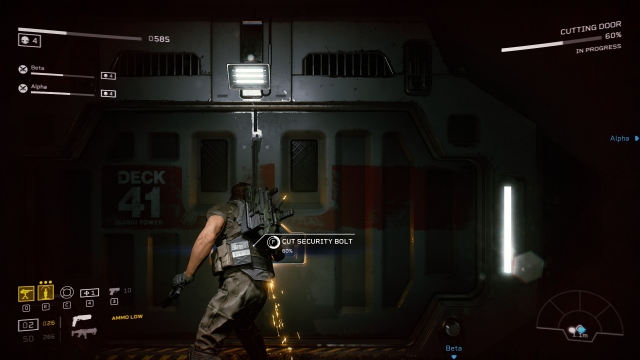
General level design is a mixed bag that varies from each campaign, as each one takes a distinct feel and setting. Campaign one is a mostly uninspired trod through a space station of winding rooms and tight corridors that are occasionally split up by the rare occurrence of a wide-open space that exposes the heart of the station, giving players an area that I wish we saw more of. While that narrow design may do well for offering dynamic gameplay and tense standoffs, it does not do well with being memorable or accommodating for a third-person camera view. Many fights are difficult to partake in as your vision is blocked by your own cranium as you try to fight off a Xenomorph that you physically can’t see through your model. Most corridor fights end up with two players firing and one awkwardly waiting for something to either sneak up behind or for their teammate to die, as the lack of crouch means that firing down corridors as a team isn't going to happen unless you fancy the idea of an interstellar court-martial.
Campaign two picks this up, offering more lush visuals amid wider spaces that felt like they were designed with the third-person perspective in mind. Although campaign two also featured what was quite frankly the absolute worst choice of music composition I think I’ve ever heard in a videogame. You’re fighting for your life as Xenomorphs descend on you at all angles, yet the music sounds like I’m about to watch Wile E. Coyote get bitchslapped. Music aside, it does all feel ultimately like an Alien game no matter what, it’s just a shame that Alien games have a habit of filling the screen with grey drab.
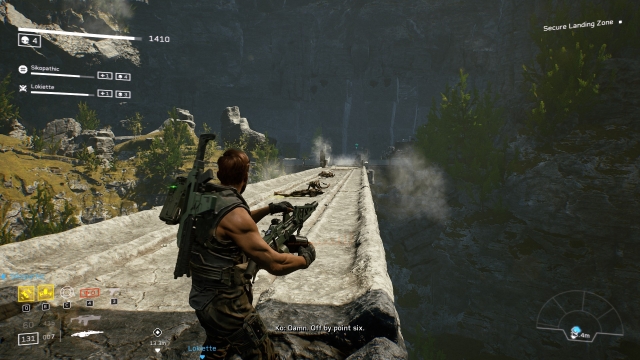
I did experience a handful of bugs, although apart from one time where our editor (whom I was playing with) was unable to shoot or take any actions until he was incapacitated, these bugs were all minor audio and visual bugs. While they could be very irritating at times, they weren’t game-breaking. Load times were reliable, and I never experienced any FPS drops, crashes, or technical failures during play.
Aliens: Fireteam Elite is a surprise, but a welcome one. There’s little individuality with the characters, an unusual decision for a co-op based horde shooter, but one that pays off. Aliens' habit of trying too hard to integrate major story into their games has often been their downfall as opposed to when they fully sink their efforts into gameplay. There’s something undeniably satisfying about blasting the shit out of some Xenomorphs while still keeping them the dangerous threat that we saw them as back in 1979 that has gone unappreciated for some time now, but Cold Iron Studios seem to have the formula down pretty damn good, with only a small handful of kinks to iron out.
Aliens: Fireteam Elite (Reviewed on Windows)
This game is good, with a few negatives.
Whilst not without its faults, Aliens: Fireteam Elite is a satisfying co-op shooter that shows that there's still fun to be had with the Aliens franchise.


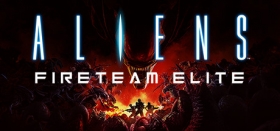






COMMENTS